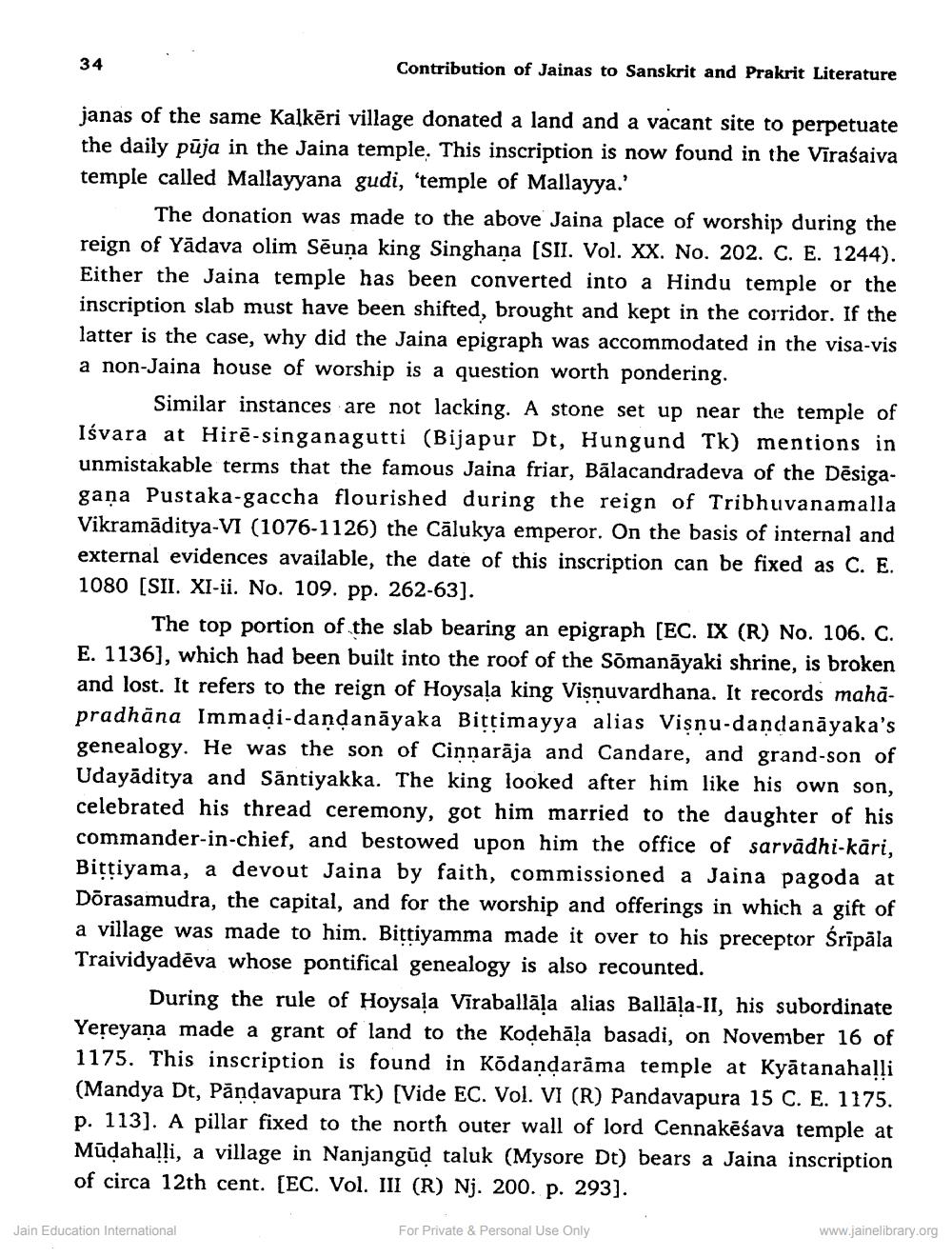________________
.
34
Contribution of Jainas to Sanskrit and Prakrit Literature
janas of the same Kalkēri village donated a land and a vacant site to perpetuate the daily pūja in the Jaina temple. This inscription is now found in the Viraśaiva temple called Mallayyana gudi, 'temple of Mallayya.'
The donation was made to the above Jaina place of worship during the reign of Yādava olim Sēuna king Singhana (SII. Vol. XX. No. 202. C. E. 1244). Either the Jaina temple has been converted into a Hindu temple or the inscription slab must have been shifted, brought and kept in the corridor. If the latter is the case, why did the Jaina epigraph was accommodated in the visa-vis a non-Jaina house of worship is a question worth pondering.
Similar instances are not lacking. A stone set up near the temple of Isvara at Hirē-singanagutti (Bijapur Dt, Hungund Tk) mentions in unmistakable terms that the famous Jaina friar, Bālacandradeva of the Dēsigagana Pustaka-gaccha flourished during the reign of Tribhuvanamalla Vikramāditya-VI (1076-1126) the Cālukya emperor. On the basis of internal and external evidences available, the date of this inscription can be fixed as C. E. 1080 (SII. XI-ii. No. 109. pp. 262-63).
The top portion of the slab bearing an epigraph (EC. IX (R) No. 106. C. E. 1136), which had been built into the roof of the Somanāyaki shrine, is broken and lost. It refers to the reign of Hoysaļa king Visnuvardhana. It records mahapradhāna Immadi-dandanāyaka Bittimayya alias Vişnu-dandanāyaka's genealogy. He was the son of Cinnarāja and Candare, and grand-son of Udayāditya and Sāntiyakka. The king looked after him like his own son, celebrated his thread ceremony, got him married to the daughter of his commander-in-chief, and bestowed upon him the office of sarvadhi-kāri, Bittiyama, a devout Jaina by faith, commissioned a Jaina pagoda at Dorasamudra, the capital, and for the worship and offerings in which a gift of a village was made to him. Bittiyamma made it over to his preceptor Śrīpāla Traividyadēva whose pontifical genealogy is also recounted.
During the rule of Hoysala Viraballāļa alias Ballāļa-II, his subordinate Yereyana made a grant of land to the Kodehāla basadi, on November 16 of 1175. This inscription is found in Ködandarāma temple at Kyātanahalli (Mandya Dt, Pāndavapura Tk) [Vide EC. Vol. VI (R) Pandavapura 15 C. E. 1175. p. 113]. A pillar fixed to the north outer wall of lord Cennakēśava temple at Mūdahalli, a village in Nanjangüd taluk (Mysore Dt) bears a Jaina inscription of circa 12th cent. [EC. Vol. III (R) Nj. 200. p. 293].
Jain Education International
www.jainelibrary.org
For Private & Personal Use Only




